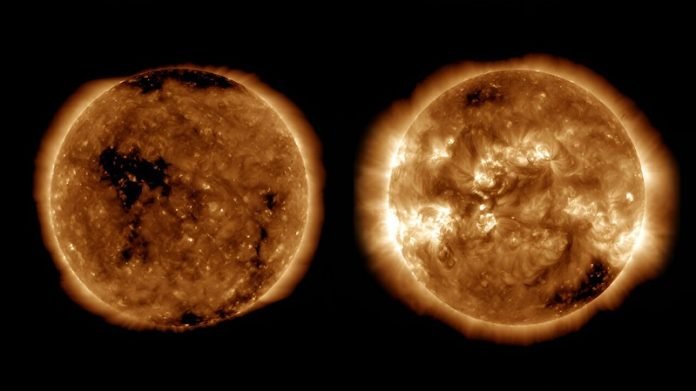
In 2006, NASA sent two special spacecrafts into space.
They were called STEREO-A and STEREO-B, which are short for Solar TErrestrial RElations Observatory.
These twins were sent to watch the Sun from different angles.
Imagine you and a friend are both looking at a ball but from opposite sides; together, you can see the whole ball. That’s what these spacecrafts were trying to do with the Sun.
For a long time, humans could only see one side of the Sun from Earth. But in 2011, these two spacecrafts changed that.
They moved so far apart from each other that, together, they could see the whole Sun! It was like looking at a complete glowing ball for the first time.
However, in 2014, NASA lost touch with STEREO-B. It was like losing one of our eyes watching the Sun. But STEREO-A kept going and kept sending back cool pictures of the Sun.
Now, after almost 17 years, STEREO-A is making a quick visit near Earth on August 12, 2023. This is super special! During this flyby, STEREO-A will work with other Sun-watching tools we have close to Earth.
Together, they’ll give us a 3D movie of the Sun. It’s like those 3D films you watch with special glasses, where things seem to pop out of the screen. With this “movie,” scientists can see the Sun in a way they never have before.
Have you ever seen pictures of the Sun with big, bright loops and arches? Those are called coronal loops.
But there’s a mystery. Some scientists think they don’t actually look like loops and might be a trick of the eye. This flyby will help solve that mystery.
Also, sometimes, the Sun throws out big blasts of energy called coronal mass ejections, or CMEs for short. When these hit Earth, they can mess with our technology.
We want to know more about CMEs, so we can be ready for them. When STEREO-A flies by Earth, it will “feel” these blasts, and it will give scientists better information about them.
The last time STEREO-A was near Earth, the Sun was very calm. But now, the Sun is more active because it goes through cycles of being calm and then very busy.
This means STEREO-A will see a very different Sun this time, and scientists are super excited about that.
So, this visit from STEREO-A isn’t just a hello. It’s a special chance to learn more about our bright and mysterious Sun!
Follow us on Twitter for more articles about this topic.
Source: NASA.



